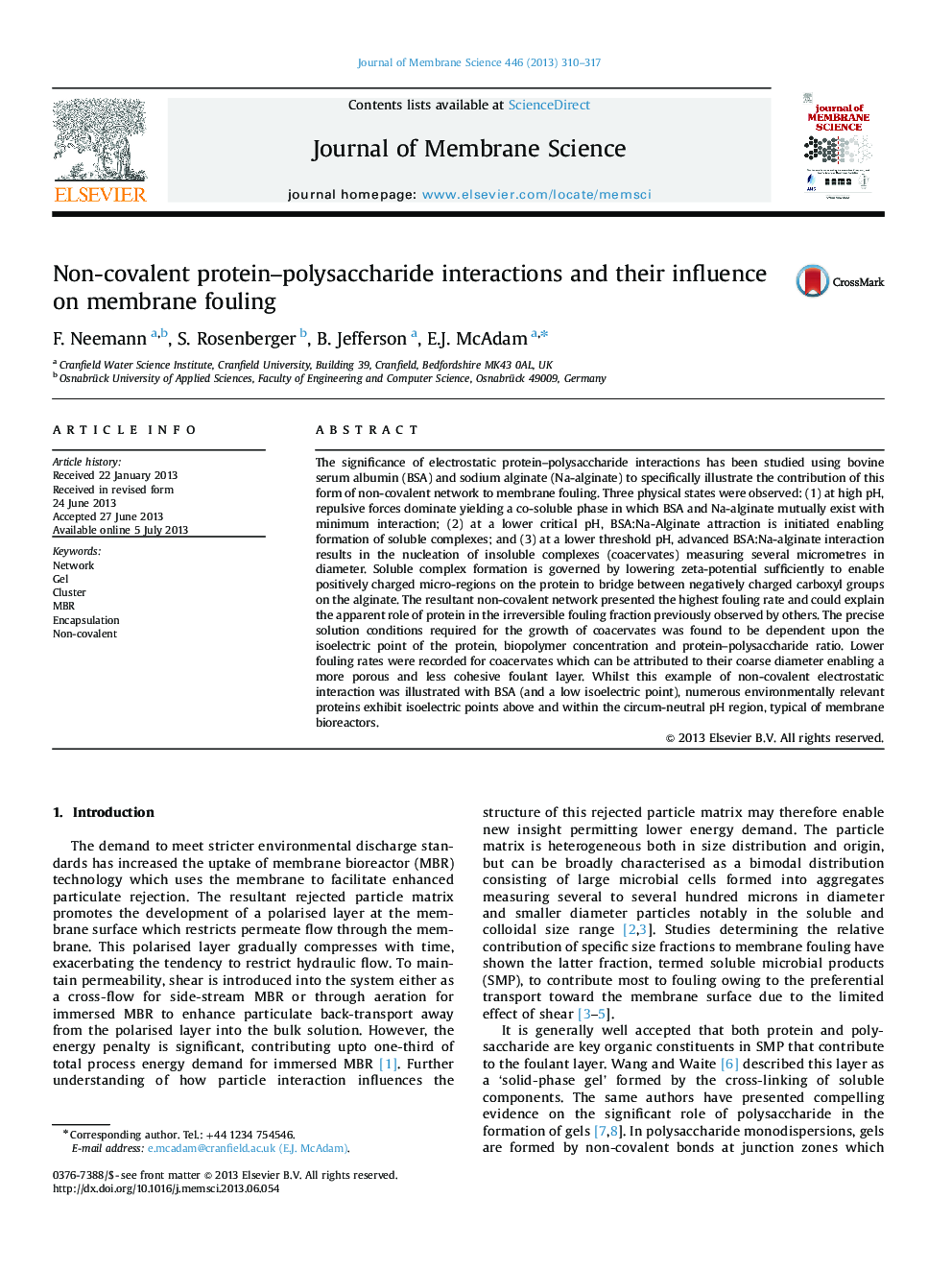| Article ID | Journal | Published Year | Pages | File Type |
|---|---|---|---|---|
| 634061 | Journal of Membrane Science | 2013 | 8 Pages |
•Non-covalent electrostatic protein–polysaccharide interactions can be classified by three physical states.•The apparent role of protein in the irreversible fouling fraction is introduced.•The mechanism for insoluble complex formation is introduced.
The significance of electrostatic protein–polysaccharide interactions has been studied using bovine serum albumin (BSA) and sodium alginate (Na-alginate) to specifically illustrate the contribution of this form of non-covalent network to membrane fouling. Three physical states were observed: (1) at high pH, repulsive forces dominate yielding a co-soluble phase in which BSA and Na-alginate mutually exist with minimum interaction; (2) at a lower critical pH, BSA:Na-Alginate attraction is initiated enabling formation of soluble complexes; and (3) at a lower threshold pH, advanced BSA:Na-alginate interaction results in the nucleation of insoluble complexes (coacervates) measuring several micrometres in diameter. Soluble complex formation is governed by lowering zeta-potential sufficiently to enable positively charged micro-regions on the protein to bridge between negatively charged carboxyl groups on the alginate. The resultant non-covalent network presented the highest fouling rate and could explain the apparent role of protein in the irreversible fouling fraction previously observed by others. The precise solution conditions required for the growth of coacervates was found to be dependent upon the isoelectric point of the protein, biopolymer concentration and protein–polysaccharide ratio. Lower fouling rates were recorded for coacervates which can be attributed to their coarse diameter enabling a more porous and less cohesive foulant layer. Whilst this example of non-covalent electrostatic interaction was illustrated with BSA (and a low isoelectric point), numerous environmentally relevant proteins exhibit isoelectric points above and within the circum-neutral pH region, typical of membrane bioreactors.
Graphical abstractFigure optionsDownload full-size imageDownload high-quality image (156 K)Download as PowerPoint slide
